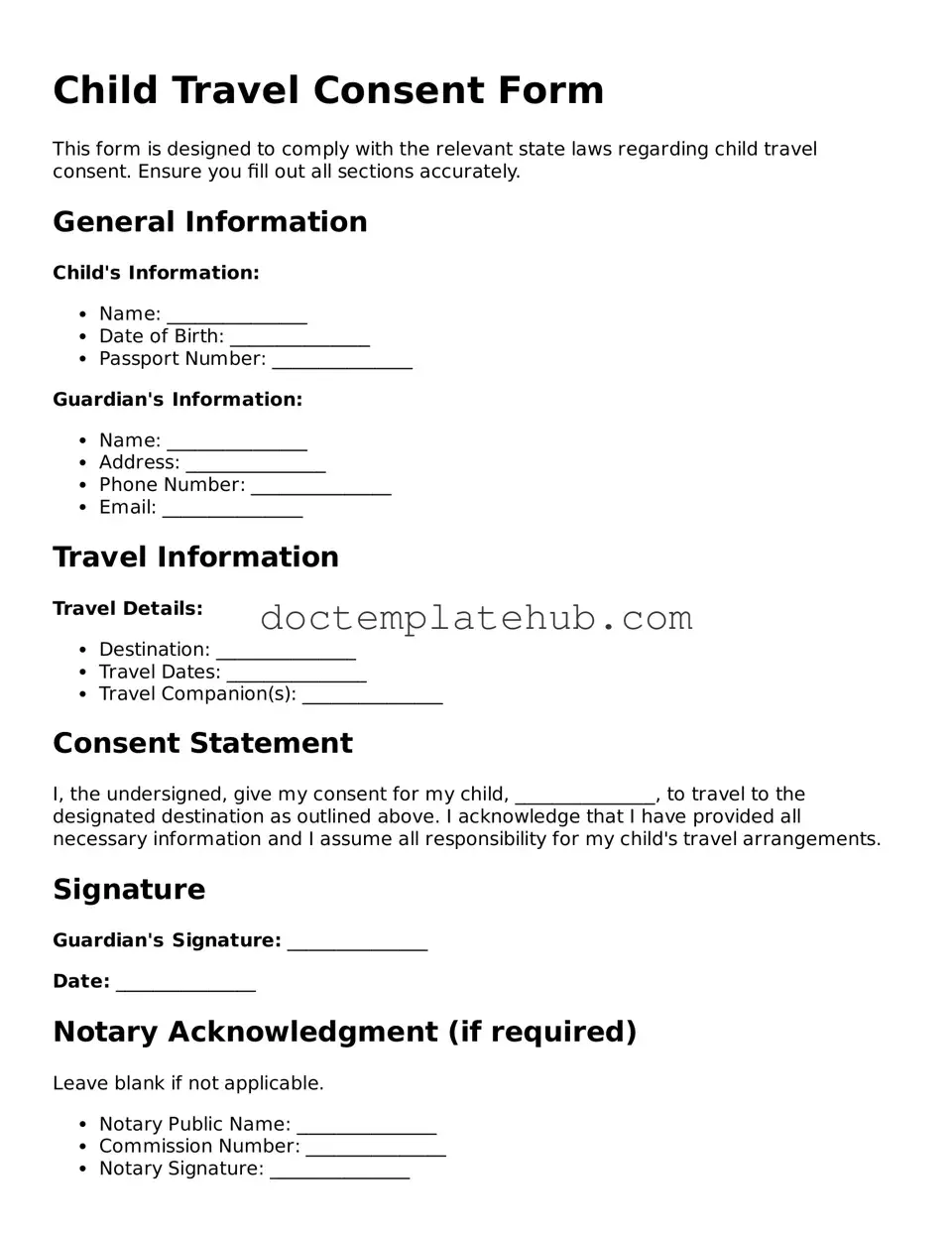What is a Child Travel Consent Form?
A Child Travel Consent Form is a legal document that allows a minor to travel without one or both parents or guardians. This form is particularly important when a child is traveling internationally or with someone who is not their parent. It serves to provide permission for the child to travel and helps prevent potential issues at borders or during travel.
Why is a Child Travel Consent Form necessary?
This form is necessary to ensure that a child has permission from their parent or guardian to travel. It helps to protect the child and the accompanying adult from any legal complications. Authorities, such as border control or airlines, may require this document to verify that the child is traveling with consent.
Who needs to sign the Child Travel Consent Form?
The form typically needs to be signed by the parent or legal guardian who is not accompanying the child on the trip. If both parents share custody, both may need to provide consent unless otherwise stated in a custody agreement.
What information is required on the form?
Common information required includes the child's full name, date of birth, and travel itinerary. The form should also include the names and contact information of the parents or guardians, as well as the name of the adult accompanying the child. Additional details, such as travel dates and destinations, may also be necessary.
Is a Child Travel Consent Form required for domestic travel?
While a Child Travel Consent Form is not typically required for domestic travel within the United States, it is still advisable to have one. Airlines and other travel authorities may ask for proof of consent, especially if the child is traveling with someone other than a parent or guardian.
How can I obtain a Child Travel Consent Form?
Parents can find templates for a Child Travel Consent Form online. Many legal websites provide free or paid templates that can be customized. It is important to ensure that the form complies with the laws of the state or country where the child will be traveling.
Does the Child Travel Consent Form need to be notarized?
Notarization is not always required, but it is often recommended. Having the form notarized can add an extra layer of legitimacy and may help in case of any disputes during travel. Some airlines or countries may specifically require a notarized form.
What should I do if I lose the Child Travel Consent Form?
If the form is lost, it is best to recreate it as soon as possible. If notarized, contact the notary to obtain a new copy. It is wise to carry multiple copies of the form during travel to avoid issues.
Can a Child Travel Consent Form be revoked?
Yes, a Child Travel Consent Form can be revoked by the parent or guardian who signed it. However, it is essential to notify all parties involved, including the adult accompanying the child and any relevant travel authorities, to avoid complications during travel.
What should I do if my child is traveling internationally?
If your child is traveling internationally, it is crucial to have a Child Travel Consent Form prepared. Additionally, check the entry requirements of the destination country, as some may have specific regulations regarding minors traveling alone or with someone other than their parents.
